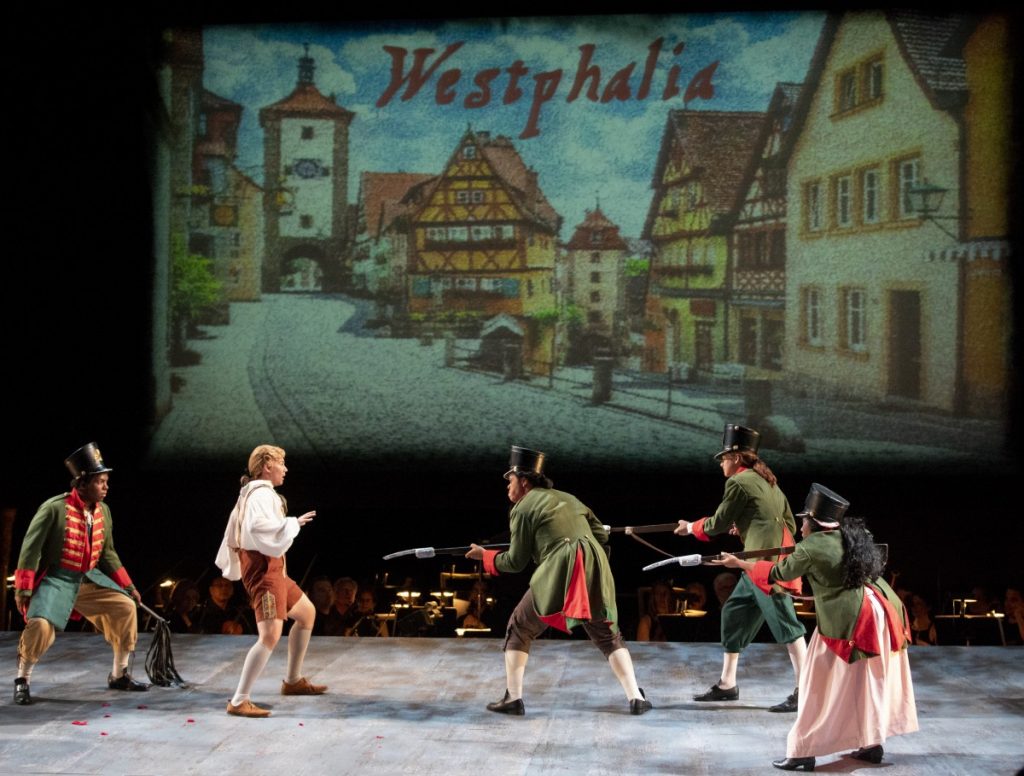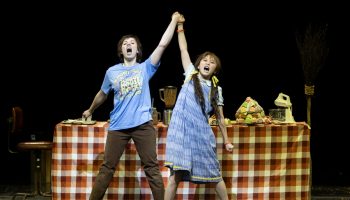
In almost 40 years of working in theater production and lighting design, Michael Baumgarten has seen decades of technological evolution.
“When I started doing lighting, it was when they had the very first computer board. Before that, you had people manually moving little handles to change the lighting looks,” he said. “The next thing you had was moving lights, and all those computerized lights … and now you have LEDs, and (you’re) able to change color everywhere (in) a single moment.”
In today’s opera world, lighting isn’t the only tool at his disposal.
For this week’s Chautauqua Opera Behind-the-Scenes Series: Video and Projections, Baumgarten, Chautauqua Opera’s longtime director of production, resident lighting designer and video and projection designer, will join former General and Artistic Director Jay Lesenger in conversation with General and Artistic Director Steven Osgood. The event will air at noon EDT Thursday, July 30, on the CHQ Assembly Virtual Porch.
Baumgarten and Lesenger worked together at Chautauqua Opera for 20 years before Lesenger’s retirement from the position in 2015. He continues to direct operas around the country.
“We joke that we’re like brothers,” Lesenger said. “We know each other very well and we laugh at each other. … Sometimes we yell at each other, but most of the time we laugh.”
For the Behind-the-Scenes Series, they will share stories and answer audience questions, with an emphasis on Chautauqua Opera’s 2018 production of Leonard Bernstein’s Candide. Lesenger returned to the Institution to direct the opera, with Baurgarten in charge of the production’s extensive video and projections.
“It was wonderful to work with my friends again. I love the family up there,” Lesenger said. “Candide is an extremely challenging piece, and in all of my years I was running the company it was always on my list but I didn’t take it on, because frankly, I didn’t have time with what was a very busy directing career and running the company.”
The opera follows the titular Candide on a haphazard journey around the world, featuring scenes in more than five different countries. To account for the many and diverse scene changes, Lesenger and Baumgarten decided to use a minimalist set with projected backgrounds.
“(Baumgarten), in my years, had really developed the use of video projections at Chautauqua,” Lesenger said. “That was a relatively recent addition to the design process up there.”
To give the backgrounds a cohesive and whimsical feel, Baumgarten and Lesenger modeled the backgrounds of Impressionist oil paintings.
“We didn’t want it to be realistic projections or realistic places,” Baumgarten said. “We happened on a Monet painting and we said, ‘Oh my God, that’s the end of the opera.’”
As well as compiling or designing the backgrounds, Baumgarten created animations for the projections, such as location names that move themselves off stage and even an exploding house.
“There’s a wonderful battle scene … and (Baumgarten) was able to animate it so you watch the chateau blow up and be destroyed,” Lesenger said. “It was actually very funny to look at — it was meant to be comical.”
When he’s not at Chautauqua, Baumgarten works as the director of production and resident lighting designer for Opera Carolina in Charlotte, North Carolina. He has a feeling he’ll be back at the Institution for many years to come. This summer, he’s working as director of production for the digital CHQ Assembly.
“What keeps me coming back? My wife,” he said. “She has so many friends here after 25 years that she told me I can retire from my job here in Charlotte, but I could never retire from Chautauqua.”




